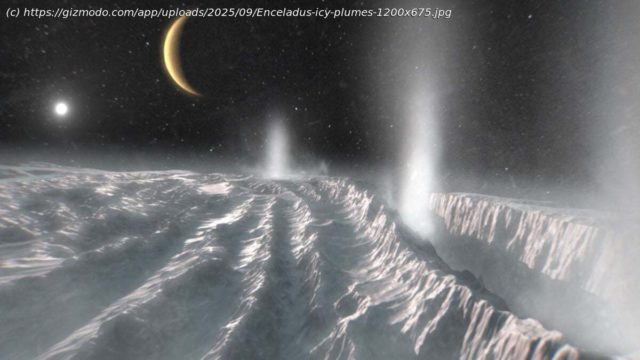The findings strengthen the case for this icy moon’s habitability.
The south pole of Enceladus—a tiny moon orbiting Saturn—is a volatile place. In this region, the moon’s subsurface ocean spews jets of water through four “tiger stripe” cracks in the icy crust, culminating in a single plume of ice particles that stretches hundreds of miles into space.
The Cassini spacecraft spent two decades studying these particles to search for evidence of habitability on Enceladus. In 2008, the probe flew straight through the icy plume to study particles that were ejected only minutes before they hit the spacecraft’s Cosmic Dust Analyzer (CDA). More than 15 years later, scientists have finally deciphered this data, finding that the particles contained organic molecules never seen in Enceladus’s ejections before.
The study, published Wednesday in the journal Nature Astronomy, explains that the newly detected molecules include those involved in chains of chemical reactions that ultimately give rise to more complex molecules that are essential for life on Earth, according to the researchers.
“There are many possible pathways from the organic molecules we found in the Cassini data to potentially biologically relevant compounds, which enhances the likelihood that the moon is habitable,” said lead author Nozair Khawaja, a researcher at Freie Universität Berlin, in a statement from the European Space Agency (ESA).
Домой
United States
USA — software New Life-Giving Molecules Found in 17-Year-Old Data From Saturn’s Moon Enceladus






